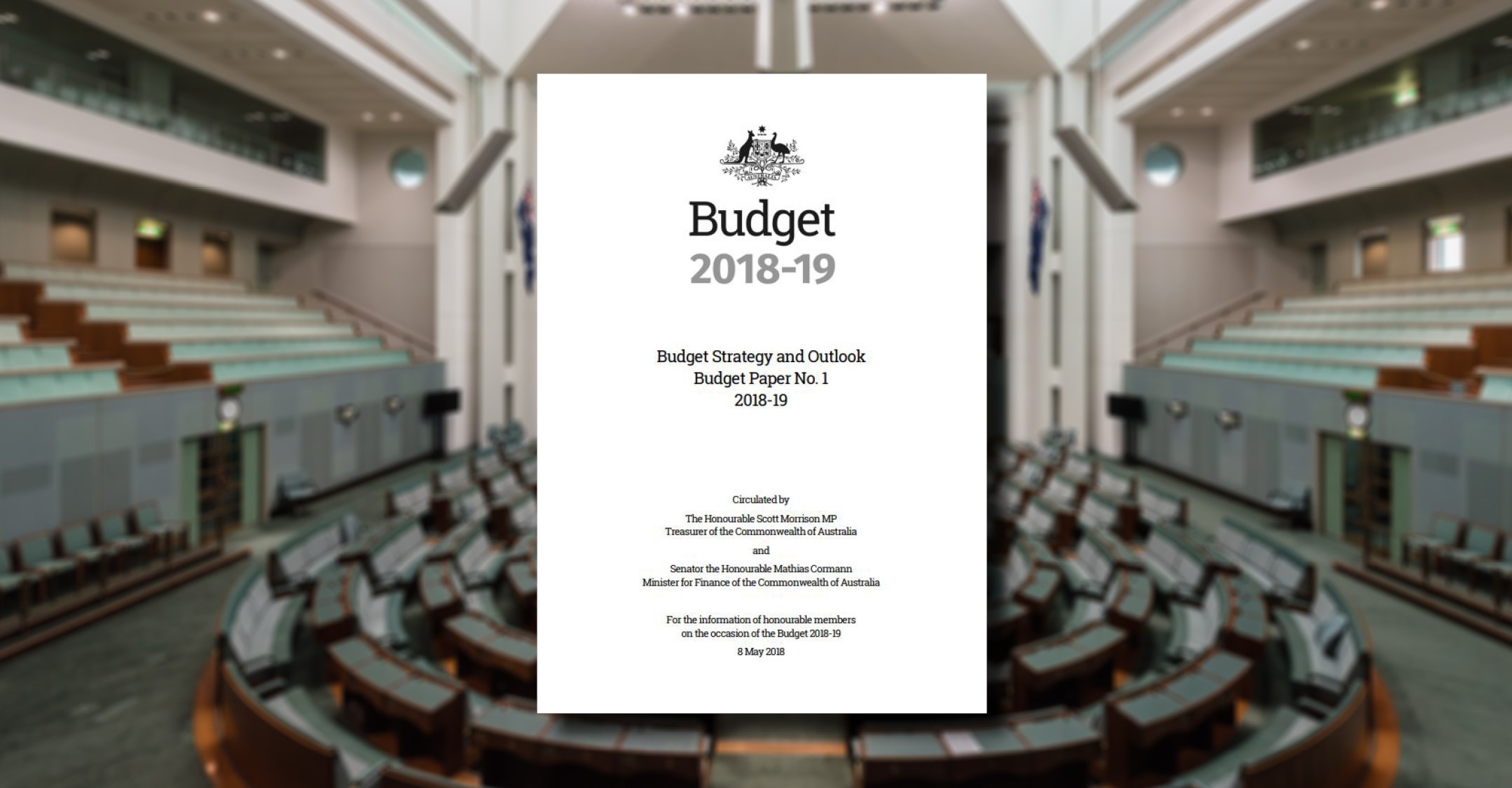Australia's Federal Budget 2018-19 has arrived, and from an energy markets and climate change policy perspective we have seen few surprises and certainly nothing material to report for business. It was clear from the Treasurer’s speech that the focus on household energy expenses continues with annual power bills estimated to “fall by $400 on average for every Australian household” following the introduction of our National Energy Guarantee from 2020. We also heard that from 2020, all energy sources and technologies “should support themselves without taxpayer subsidies” with the current subsidy scheme phased out.
What is unclear though, in the interim, is how a change of government could affect these plans and the uncertainty this presents.
Other relevant announcements for energy and climate change are presented below:
- Reducing ‘climate spending’ from $3bn in 2017-18 to $1.25bn in 2021-22 with no additional contributions announced for the Emissions Reduction Fund, which has $265 million remaining in funds.
- $0.9 million allocated to undertake modelling for a long-term whole-of-economy emissions reduction strategy. Noting that there needs to be urgency attached to this task. Emissions have been rising across the economy and, as Energetics’ analysis has shown, the greater the delay to meaningful action, the more costly the efforts become.
- $535.8 million allocated over five years from 2017-18 to protect the Great Barrier Reef from climate change and pollution.
- The Department of Environment and Energy budget release: “Powering Forward” identifies an additional investment of $41.5 million that will be used to support the following:
- Developing the National Energy Guarantee
- Improving weather information to support the resilience of energy infrastructure
- Helping energy consumers by creating a Consumer Data Right which makes it easier to share data with comparison services or alternative energy suppliers
- Developing a register of distributed energy, such as solar panels and batteries, which will support better management of the electricity grid
- Assessing energy reliability through a review of liquid fuels by the end of 2018 and completion of the National Energy Security Assessment by mid-2019
- Continuing to fund the COAG Energy Council to deliver energy market transformation (including law changes for a decentralised energy grid) and energy efficiency (including the National Energy Productivity Plan and building energy rating schemes)
From an infrastructure perspective, the investment in the $400m Port Botany rail line duplication and $5bn Melbourne Airport Rail Link will assist with reducing energy and emissions associated with transport. These initiatives shift traffic from our roads to rail and will be complimented by a $1 billion Urban Congestion Fund to support projects at a State level to improve traffic flow in our cities
From a technology perspective, the Government will provide $160.9 million over four years to improve the accuracy, integrity and availability of satellite navigation. It is anticipated that this measure will reduce energy consumption through precision farming techniques and navigation on fishing trawlers but could also assist greatly in the application of automation in many industries. This will be supported by a $29.9 million investment to strengthen Australia’s capability in Artificial Intelligence (AI) and Machine Learning (ML) which will be a valuable aid in monitoring and automating remote processes that can affect energy use.
Energetics will keep you informed as developments arise. If you have any questions or comments in the meantime, please contact the author or any one of our experts.







